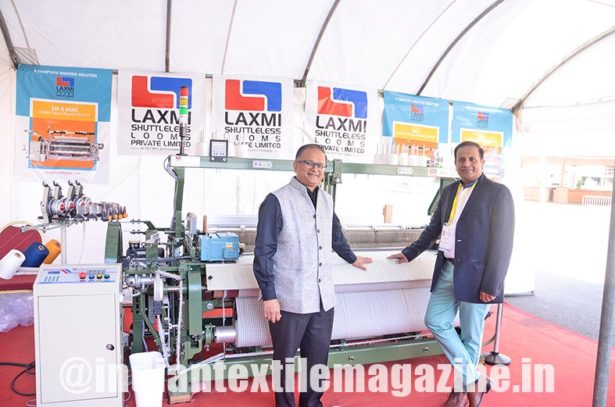At Laxmi Shuttleless Looms, there is no concept of selling off-the-shelf. That is because the company understands that every customer has different requirements. Catering to such needs is what makes it special

Guess what is that special magic that has woven the success story of Laxmi Shuttleless Looms? It’s customisation! Every order at this Ahmedabad-based weaving machine manufacturer is customised and not supplied in standardised form. The company first understands the needs of its customers, re-engineers and then builds a prototype as per individual requirements. Whenever there are tricky issues involved in the weaving process, Laxmi Shuttleless Looms encourages the customer to take a trial on a prototype. Only after the customer shows satisfaction with the fabric quality does the company start working on the order.
“Every order needs to be customised, and is done mainly for easy weaving of the fabric. In our rapier looms, various fabrics like jute, silk, industrial fabrics, linen, etc., can be produced and so the machine has to be re-engineered accordingly to suit weaving of these various fabrics. Even the needs of weavers are different in each state of India and so the loom has to be modified accordingly,” Ketan Sanghvi, Director at Laxmi Shuttleless Looms, informs. He is the third generation of the Sanghvi family, which began business as a trader of textile machinery spare parts way back in 1948.
Eventually, the enterprise branched into castings and manufacturing of weaving dobbies in mid-sixties. In 1978, they began manufacturing of shuttle looms. Also involved in the business are Ketan Sanghvi’s three other brothers: Divyang looks after marketing in some crucial markets, Hemang looks after shuttleless loom production and new developments and Nimish manages the foundry and finance. The company’s growth history is related to the Mumbai textile mills’ strike in 1982 that led to the weaving industry moving to a decentralised sector. “Our participation for the first time in the India ITME trade fair in 1980 and the shift of weaving to the decentralised sector after 1982 gave the required thrust to sales of our shuttle looms in those days,” Sanghvi recalls.
In 2002, the company began manufacturing flexible shuttleless rapier looms, which have continually been upgraded through means of electronics and automation. Laxmi Shuttleless Looms has now sought technology from a US-based company to help them improve their existing range. The company manages two plants for shuttle looms and one for producing shuttleless looms and also a foundry for manufacturing castings for the looms. The in-house foundry helps them have control over the quality of castings that are fit into the weaving machines, which make up for 60% of a loom.
A majority of its revenue comes from the India market and the company has sold machines in all the weaving clusters and practically across all states, including Jammu and Kashmir, Uttar Pradesh, Bihar, Odisha, West Bengal and also in the North East region. It has also exported to countries like Sri Lanka, Bangladesh, Nepal, Myanmar, Thailand, Indonesia, the Middle East, etc. Its fully customised looms are being used in Germany and the US. “We have kept on updating our technologies and so there is a big difference in the shuttle looms we produced earlier and today,” Sanghvi states.
“The current generation of looms has more engineering, along with more electronics and automation, while needing lesser maintenance. They are also easier to operate,” Sanghvi adds. Along with a consortium of four other Indian companies, Laxmi Shuttleless Looms is now working on developing a high-speed rapier shuttleless loom with the idea being to share in some parts and compete in other parts among the five companies. It is also working towards developing an automatic pirn changing technology for production of certain types of fabrics, where selvedge is mandatory.